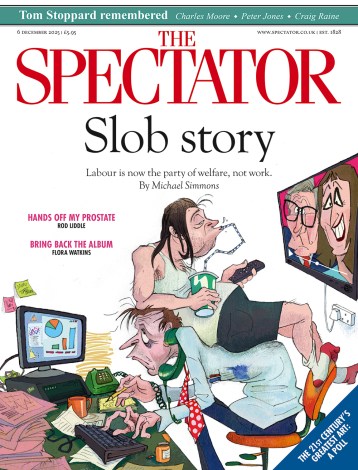Earlier this summer, NHS England published its long-term workforce plan. It has the backing of all major political parties and outside of health policy circles it did not attract much attention at first. But now, as its full implications (especially in fiscal terms) are becoming obvious, that is changing. A new report from the Institute for Fiscal Studies (IFS) has modelled what this plan, if fully implemented, would entail.
The NHS currently employs 1.5 million people, or about 6 per cent of the total workforce and a little under 40 per cent of the public sector. Under the health service’s workforce plan, that number will rise to 2.3 million by 2036, accounting for around 9 per cent of the total workforce, and 49 per cent of the public sector workforce. In other words, the NHS will employ one in eleven workers in the country, and half of all public sector workers.
NHS workforce planning is the type of planning that would not have looked out of place in the Soviet Union
In order to entice so many more people to work for the NHS, real wages in the health sector will have to grow at least at the same rate as in the wider economy. More likely, they will have to grow at a higher rate than that. According to the IFS, the NHS wage bill will therefore have to increase by at least 4 per cent per annum in real terms, and it could be closer to 5 per cent. Staff costs account for the bulk of NHS spending, but they are not the whole story: more NHS staff will almost certainly imply knock-on costs elsewhere (greater use of medical equipment, premises, energy etc.).
According to the IFS’s central estimate, the NHS budget will increase by over £100 billion by the middle of the next decade, equivalent to an additional two percentage points of national income. Paying for this would require raising the standard rate of VAT by 7 percentage points (i.e. from 20 per cent to 27 per cent), or alternatively, raising all income tax rates by 6 percentage points (i.e. from 20 per cent to 26 per cent for the basic rate). These figures depend, however, on modelling assumptions, and could be a lot higher than that.
A workforce plan is not legally binding, and there is no guarantee that it will be implemented in this form. But given the special status of the NHS in the national psyche, combined with the sense of crisis around it, it would be politically difficult for any government to row back on this. They would immediately be accused of ‘undermining’ the health service with ‘brutal cuts’ – probably as part of a secret plot to privatise it through the back door.
Increases of this magnitude are not unprecedented: it would be comparable to the spending injection of the Blair years. But there are some large differences. Firstly, we are starting from a very different place today. In the 1990s, the NHS really was a fairly spartan system, which is why Tony Blair’s promise to raise UK healthcare spending to the EU average probably made sense at the time. Today, however, despite all the talk about ‘austerity’ or the alleged ‘defunding’ of the NHS, the UK is actually in the global top ten when it comes to healthcare spending as a proportion of GDP.
Secondly, the Blair government did not just unconditionally throw more money at an otherwise unreformed system. Rather, they increased spending alongside a broader package of reform measures.
Today, beyond the usual platitudes about ‘care in the community’ or prevention being ‘better than cure’, the major parties have completely run out of ideas on health reform. The NHS workforce plan makes heroic assumptions about productivity improvements, implying a doubling of the NHS’s long-term productivity growth rate, but it is not at all clear where this revolution is supposed to come from.
It is not, in principle, a bad thing if a rich country with an ageing population dedicates a greater share of its resources to healthcare. Nor is it in itself a problem if the health sector employs a greater proportion of the workforce. Personally, I would rather have more doctors and nurses than more ‘diversity, equity and inclusion officers’ or more ‘net zero and sustainability managers’.
But there are two problems here: firstly, the UK has an unusually state-centred health system, which is almost wholly reliant on taxation – with all the damaging economic side effects this entails. Many other systems have a more diversified funding base, using insurance contributions and user charges alongside tax subsidies. They can therefore raise more money in less economically damaging ways.
Secondly, workforce planning in the NHS is the type of large-scale, top-down central planning that would not have looked out of place in the Soviet Union. It is highly doubtful whether this plan will match the needs and needs priorities of patients.
Given how poorly the NHS currently performs despite record levels of spending, there is no reason to believe that just throwing more money at it, and recruiting more people, will be enough to sort it out. Things are, however, bound to improve somewhat once the Covid backlog finally clears.
The new workforce plan looks set to turbocharge the rate at which the NHS absorbs more and more of the UK’s productive capacity. The best thing that could come out of it is that, hopefully, it will finally put the well-worn excuse that the NHS’s problems are all just due to ‘underfunding’ to bed.






Comments